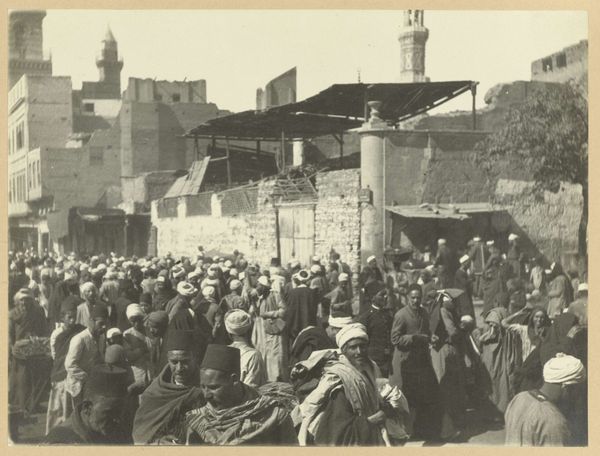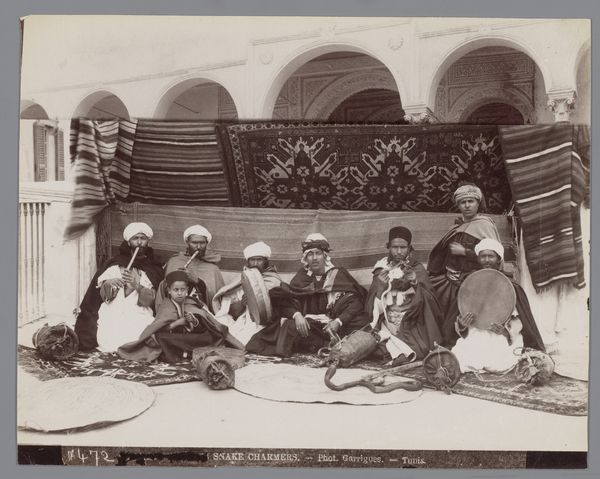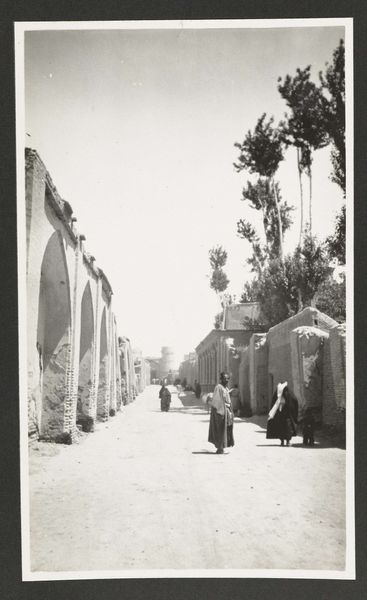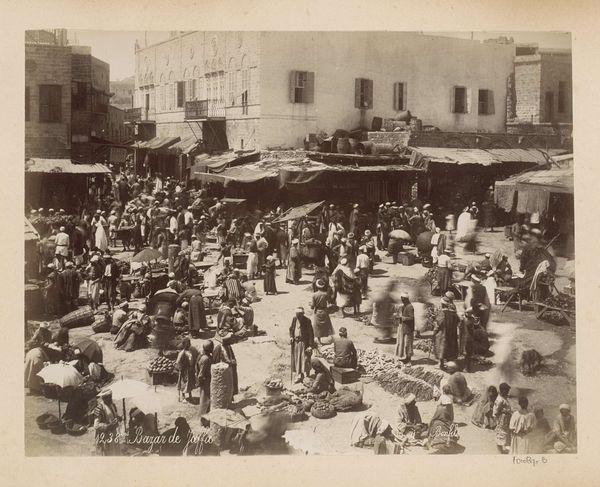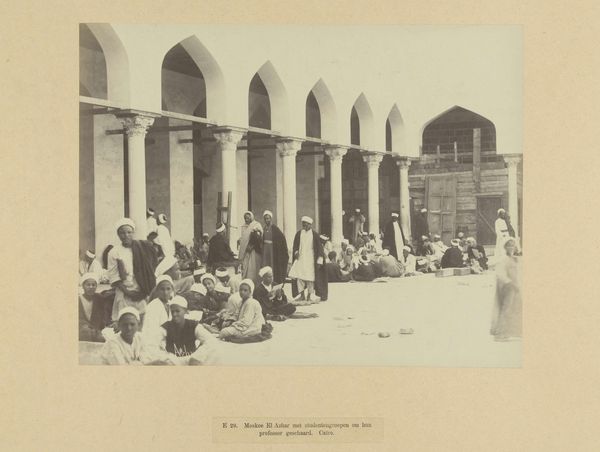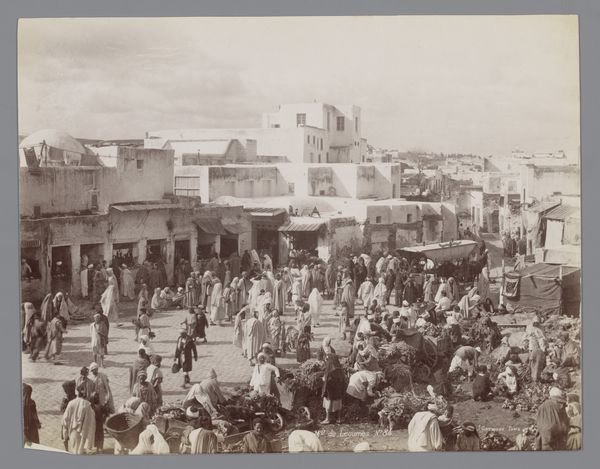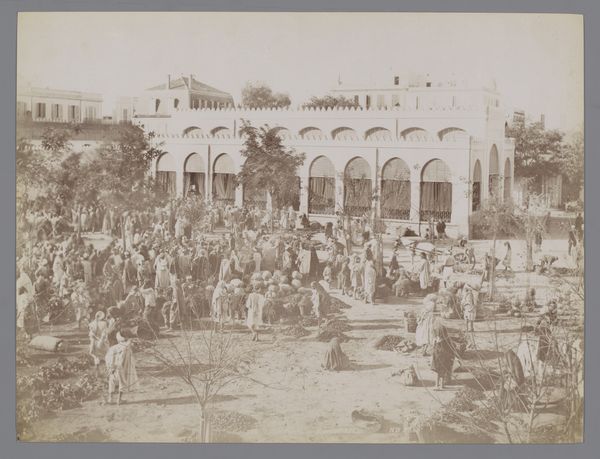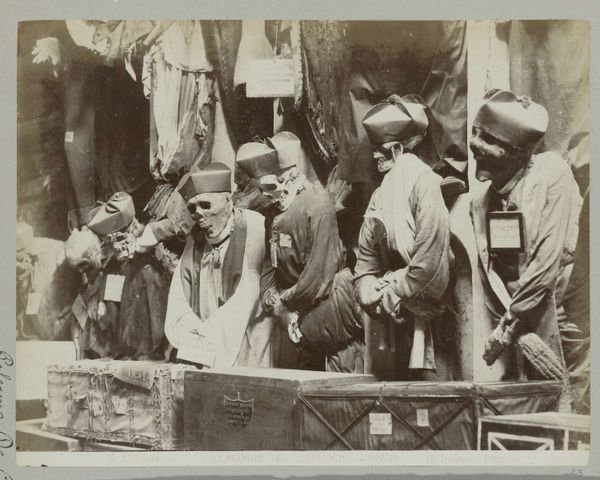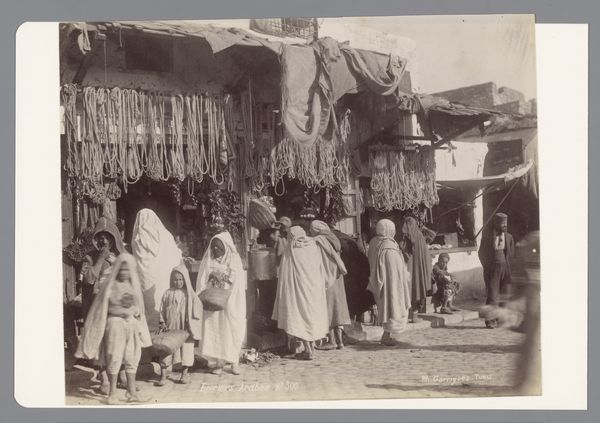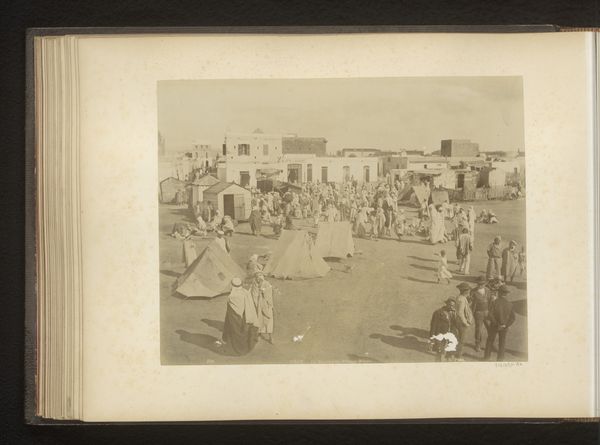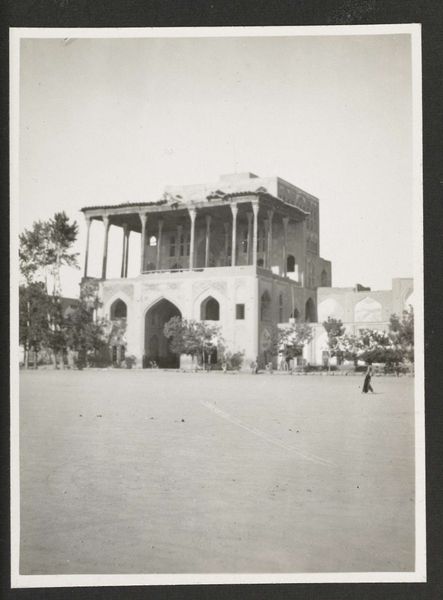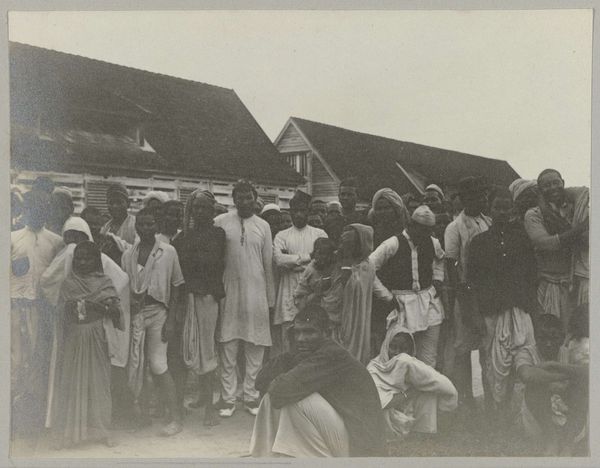
photography
#
portrait
#
street-photography
#
photography
#
historical photography
#
orientalism
#
19th century
#
islamic-art
Dimensions: height 84 mm, width 141 mm, height 124 mm, width 184 mm
Copyright: Rijks Museum: Open Domain
Curator: This arresting image, tentatively dated 1925, is titled "Watertank waaruit Arabische vrouwen water halen te Bushire, Perzië," taken by A.G.A. van Eelde. It captures a scene in Bushire, Persia. Editor: My first impression is the strong contrast. The dark, shrouded figures of the women huddle together, sharply juxtaposed with the stark white clothing of the men. It's an immediate visual tension. Curator: Indeed, this photo reflects an interesting dynamic. It falls within a period of growing Western interest in, and representation of, the "Orient," shaping perceptions of the East through a Western lens. These visual representations played a significant role in justifying colonial and political interests. Editor: Symbolically, water often represents life and purity. In this context, though, the presence of the women drawing water gains a social significance. Are they communal figures? Marginalized individuals fulfilling societal needs? The shrouded figures could represent modesty, tradition, or even, perhaps, a visual representation of restrictions. Curator: I see it slightly differently. This image participates in the Western fascination with unveiling the “Orient”. These images weren't merely innocent depictions. By presenting specific visuals of women and daily life, photography played an active role in constructing, and sometimes exoticizing, Persian culture for a European audience. Editor: That's a valid point. However, beyond that cultural reading, I’m struck by the building looming in the background. The arches, shuttered windows—they evoke a sense of enclosure, almost like a stage set containing these figures. It strengthens a feeling of something unseen or withheld, amplifying a layer of the photographic subjects and their experience. Curator: Thinking about this photograph today urges us to question what narratives were promoted and whose perspectives were being centered in that specific cultural period. It invites a conversation on the ethics of visual representation and the lasting impact these images had and continue to have on how different cultures perceive one another. Editor: I find that even through the historical and potential politicization of this imagery, these figures – specifically the women and children in this frame – preserve the potential to spark something human. And the very preservation of the image – like an object retrieved from history, offers some enduring value.
Comments
No comments
Be the first to comment and join the conversation on the ultimate creative platform.
